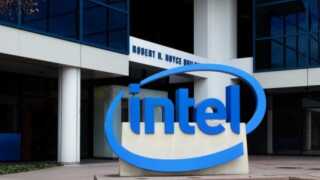This can provide an exponential boost to South Africa’s ailing economy. What will it take? The wheels are already in motion, the stakes are high … and so are the potential revenues.
A modern economy is a digital economy. To function in digital terrain, a digital platform is the first requirement. In South Africa, fibre and wireless network capacity in high-income and commercial areas is abundant. Operators are less keen, however, to invest in infrastructure that will serve sparsely populated, low-income areas. This has left 40% of South Africans—which equates to 20 million individuals- in remote and low-income communities without Internet access. With mobile connectivity being the chief means of access in South Africa for this underserved segment, an OAWN can go a long way towards solving this challenge. This begs the question how close are we?
South Africa is making all the right first moves
With the South African Government’s programme for an Open Access Public Network well advanced, and an announcement regarding the frequency spectrum to be allocated for the network expected in October, an OAWN is on the cards. This is a multi-billion Rand opportunity for service providers; it means empowerment and participation in the digital economy for a significant underserved segment of the population; and, for South Africa, a quantum boost to its economy. That being said, it will require careful regulation and network management excellence. In terms of policy, a business case that is built on driving value for all participants, from investors to service providers and end users is equally vital.
What is an OAWN exactly?
Wireless network infrastructure is ideal for remote connectivity but it is expensive to implement and requires specialist skills and equipment to manage well. Smaller regional, usually tier two and three service providers interested in offering data, voice, Internet, cloud and video streaming services to these communities cannot afford to implement the infrastructure. They also don’t have the equipment or the capabilities to manage backhaul, network monitoring and maintenance, as well as interconnects with other ISPs. Nor are larger wireless network operators interested in allowing smaller retailers to make use of their networks.
A wholesale-only OAWN model addresses all these challenges.
In an OAWN model, the wireless network infrastructure is implemented and managed by a public-private partnership (PPP) and capacity is wholesaled to multiple retailers. The infrastructure and services layers of the network are effectively separated, unlocking a host of benefits:
- A plug-and-play model comes into being, allowing service retailers to simply plug into the network and provide services to customers
- Without the cost of infrastructure to factor in, the cost of services drop, increasing affordability
- With fast access to a large number of users, albeit with thinner margins, retailers can make a business case for entering lower income segments with suitable products
- With more competition, services improve and prices come down, and a greater variety of services become available, benefiting the consumer
However, success of this model will be highly dependent on a single factor: the ability of the OAWN to manage the infrastructure.
Who will manage it?
An experienced network infrastructure management solution provider will be essential to ensure the performance and reliability of the infrastructure. With massive uptake of services expected, ensuring suitable capacity is only one part of the equation—service levels can only be maintained if infrastructure is well managed. This includes:
- Backhaul – connecting to remote base stations, managing traffic on the network, managing core network equipment and interconnects with other telco operators.
- Operations support systems (OSS) – the end customer administration and management functions such as onboarding and billing. Service providers may choose to use their own OSS platforms or systems.
- Business support systems (BSS) – the network support functions such as monitoring base stations, links and core infrastructure.
Input from specialist providers, such as Reflex Solutions, that already manage open access for commercial fibre networks, will be valuable to enable open access to a public wireless network. Reflex Solutions is already adept at enabling multiple ISPs and other telco service providers to layer services on top of the fibre that belongs to major operators and new fibre owners. This is increasing service levels for end users and lowering the cost of services, while enabling a faster ROI for infrastructure owners.
The idea of an OAWN is not new but a live version of an OAWN has yet to be launched. South Africa has a several examples –good and bad – to learn from. Weak controls, a lack of vision, unclear regulation, or policies that enable establishment of a monopoly or unfair advantage are unlikely to lead to success. If the focus is to grow connectivity, the development of infrastructure and its management will be paramount, second only to establishing a clear vision and putting the right policy and regulatory environment into place to enable that growth, and drive value for all participants.




